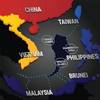Global tanker freight rates may be depressed for several more years as a stream of new vessels hit the market and shipowners refrain from scrapping older ships. However, a recovery is likely toward the end of the decade as more single-hulled tankers are taken off the market to meet regulations for safer ships. Tanker rates jumped to record highs in 2004 as a surge in oil trading and demand strained available fleet supply, but they have since retreated despite the still-booming markets for commodities such as oil, copper and sugar. The rate for a supertanker on the benchmark Middle East-Japan Very Large Crude Carrier (VLCC) reached a peak of about WorldScale 344 in November 2004, but has since fallen back to around W65, data from the Baltic Exchange showed. Part of the recent decline is due to the low number of ships scrapped over the past year, when shipowners saw more benefit in continuing to lease out tankers than selling them for scrap.
In 2005, ships with the equivalent capacity of 4.5 million deadweight tonnes (dwt) were sold for decommissioning, but the world’s fleet grew by about 7 percent as around 30 million dwt new tankers were built, data from the International Association of Independent Tanker Owners (INTERTANKO) show. A rush of new tankers is on the way: in January 2006, the number of tankers set to be built was around 26.5 percent of the current global fleet size of 4,186 tankers. But more tankers are set to be scrapped as rates hover around two-and-half year lows. According to the Daily Times, the overall health of the tanker market will improve on sustained demand for oil and the need for single-hulled fleet renewal due to international regulations. Global oil demand growth is forecast to grow 1.49 million barrels per day (bpd) in 2006, compared to 1.02 million bpd in 2005. (Source: Daily Times)
Subscribe for
Maritime Reporter E-News
Maritime Reporter E-News is the maritime industry's largest circulation and most authoritative ENews Service, delivered to your Email five times per week










